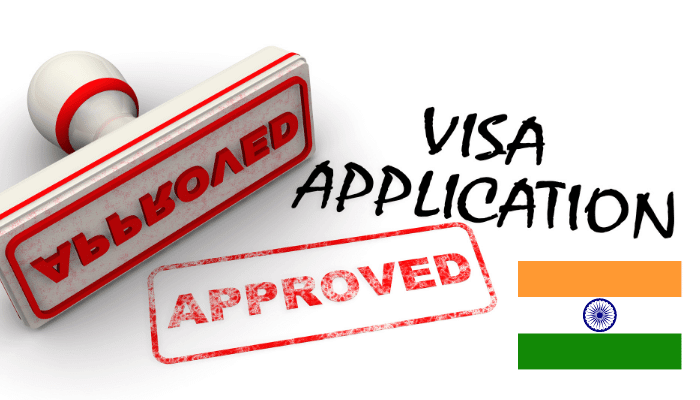Welcome to the ultimate guide on how to start a blog for free and make money! Are you ready to dive into the exciting world of blogging, where your passion can turn into profit? Whether you’re an aspiring writer, an expert in a particular field, or simply looking for a creative outlet, this comprehensive guide will equip you with all the tools and knowledge you need to kickstart your blogging journey. Say goodbye to expensive hosting fees and hello to limitless opportunities as we unveil the secrets behind monetizing your blog without spending a dime. Get ready to unleash your creativity, connect with like-minded individuals, and embark on an incredible adventure that could potentially transform your life – all while making some extra cash along the way. Let’s get started!
Introduction: Why Start a Blog?
Blogging has become increasingly popular in recent years, and for good reason. It is a powerful tool that allows individuals to share their thoughts, ideas, and expertise with the world. Whether you are looking to establish yourself as an authority in your field or simply share your passions with others, starting a blog can be a rewarding and fulfilling experience.
1. Share Your Passion
One of the best things about blogging is that it allows you to write about something that truly interests you. Whether it’s cooking, fashion, travel, or personal development – blogging gives you a platform to share your passion with others who have similar interests.
2. Establish Yourself as an Authority
Starting a blog is also a fantastic way to showcase your knowledge and expertise in a particular area. By consistently providing valuable content on a specific topic, you can position yourself as an authority in that field.
Choosing a Platform: Pros and Cons of Popular Free Blogging Platforms
When it comes to starting a blog for free, there are various platforms available that offer different features and services. It can be overwhelming to choose the right platform for your blog, especially if you are just starting out. In this section, we will discuss the pros and cons of some popular free blogging platforms to help you make an informed decision.
1. WordPress.com:
Pros:
– Easy to use interface with customizable themes and layouts.
– Offers a variety of plugins and widgets to enhance your blog’s functionality.
– Provides built-in analytics and SEO tools.
– Offers a free subdomain (yourblog.wordpress.com).
– Has a large community of bloggers for support and networking.
Cons:
– Limited customization options compared to self-hosted WordPress.org.
– Comes with limited storage space (3GB) which may not be enough for larger blogs.
– Monetization options are limited unless you upgrade to a paid plan.
2. Blogger:
Pros:
– Owned by Google, which means better indexing on search engines.
– User-friendly interface with simple drag-and-drop design options.
– Offers free hosting on their own subdomain (yourblog.blogspot.com).
– Integrated with Google AdSense for easy monetization.
Cons:
– Limited design templates compared to other platforms.
– Limited customization options, making it difficult to create unique designs.
– Not regularly updated or improved by Google as much as other platforms.
Setting Up Your Blog: Step by Step Guide
Now that you have decided to start a blog, it’s time to set it up and get it ready for the world to see. Don’t worry, this process may seem overwhelming at first, but with this step by step guide, you will be able to set up your blog in no time.
Step 1: Choose a Blogging Platform
The first step in setting up your blog is choosing a blogging platform. There are many options available such as WordPress, Blogger, Wix, Squarespace, and more. Each platform has its own features and benefits, so take some time to research and find one that best suits your needs.
Step 2: Pick Your Domain Name
Once you have chosen a blogging platform, the next step is to pick a domain name for your blog. This is the web address that people will use to access your site. It should be unique and reflect the theme or niche of your blog. You can purchase a custom domain through your blogging platform or through a third-party domain registrar.
Step 3: Choose a Hosting Provider
A hosting provider is where all of your website’s data will be stored. There are many hosting providers available such as Bluehost, GoDaddy, HostGator, etc., and they offer different packages depending on your needs and budget. Research the hosting options available and choose one that fits best with your blogging goals.
Growing Your Audience: Strategies for Increasing Traffic to Your Blog
As a blogger, one of the most important goals is to grow your audience and increase traffic to your blog. The more people who visit your blog, the more potential you have for making money through advertising, affiliate marketing, or selling products or services. In this section, we will discuss some effective strategies for increasing traffic to your blog and growing your audience.
1. Create High-Quality Content
The first and most crucial step in attracting an audience is creating high-quality content. Your content should be informative, engaging, and relevant to your target audience. Use catchy titles and include visuals such as images or videos to make it more appealing. By consistently producing valuable content, you can establish yourself as an expert in your niche and build trust with your readers.
2. Optimize Your Blog for Search Engines
Implementing SEO (Search Engine Optimization) techniques can significantly improve the visibility of your blog on search engines like Google. Keywords play a vital role in SEO – research keywords related to your niche and strategically use them throughout your content and meta descriptions. Additionally, ensure that your website’s metadata is optimized by including relevant tags and descriptions.
3. Utilize Social Media Platforms
Social media platforms are powerful tools for promoting and driving traffic to blogs. Choose the platforms where most of your target audience spends their time and regularly share links to new blog posts along with eye-catching visuals or snippets from the article itself.
Monetizing Your Blog Different Ways to Make Money Through Blogging
Monetizing your blog is an essential step towards turning it into a profitable venture. While creating quality content and growing your audience are crucial for a successful blog, it’s important to also explore different ways of generating income through blogging. In this section, we will discuss some of the most effective methods for making money from your blog.
Advertising:
One of the most common ways bloggers make money is through advertising. This involves displaying ads on your blog and earning revenue when visitors click on them or when they are shown on your site. There are two main types of advertising – display ads and affiliate marketing.
Display ads: These are the banner or text-based advertisements that appear on your blog. You can sign up with ad networks like Google AdSense, Media.net, or Ad Thrive to place these ads on your site. The amount you earn from display ads depends on factors such as the number of page views, click-through rates, and the type of ad displayed.
Legal and Technical Considerations: Understanding Copyright, Privacy, and SEO
When starting a blog, it is important to understand the legal and technical considerations that come with sharing content online. This includes understanding copyright laws, privacy regulations, and search engine optimization (SEO) techniques. In this section, we will delve into each of these areas and provide tips on how to navigate them in order to protect your blog and maximize its potential for success.
Understanding Copyright Laws:
Copyright laws are designed to protect the original creators of content from having their work used without permission or proper credit given. As a blogger, it is crucial to understand these laws in order to avoid any legal issues. Here are some key points to keep in mind:
1. Know what can be copyrighted: Copyright applies to original creative works such as written content, images, videos, and music. It does not cover ideas or facts.
2. Protect your own work: As soon as you create something original for your blog, it is automatically protected by copyright law. However, it is always a good idea to include a copyright notice on your website stating that all content belongs to you.
3. Give credit where credit is due: If you use any external sources for your blog posts such as quotes or images, make sure to properly credit the source and obtain permission if necessary.
4. Understand fair use: Fair use allows for limited use of copyrighted material without permission for purposes such as criticism, commentary or parody.
Conclusion: Celebrating Your Success as a Blogger
Starting a blog for free and making money may seem like a daunting task, but with the right strategies and dedication, it is definitely achievable. In this ultimate guide, we have covered all the essential steps you need to take to start your blogging journey from scratch. From choosing a niche to monetizing your blog, we hope this guide has provided you with valuable insights and tips.
Now that you have your blog up and running, it’s time to celebrate your success as a blogger. Here are some ways you can acknowledge your achievements in the world of blogging:
1. Set milestones for yourself:
Setting milestones is an effective way to track your progress and celebrate your success along the way. These could be anything from reaching a certain number of followers or subscribers, receiving positive feedback on your content, or achieving a specific income goal. By setting realistic milestones for yourself, you can stay motivated and focused on growing your blog.
2. Share your success:
Don’t be afraid to share your blogging journey with others! Letting people know about the hard work you put into building and maintaining your blog can make them more appreciative of what you do. It can also inspire others who want to start their own blogs but don’t know where to begin.

























+ There are no comments
Add yours